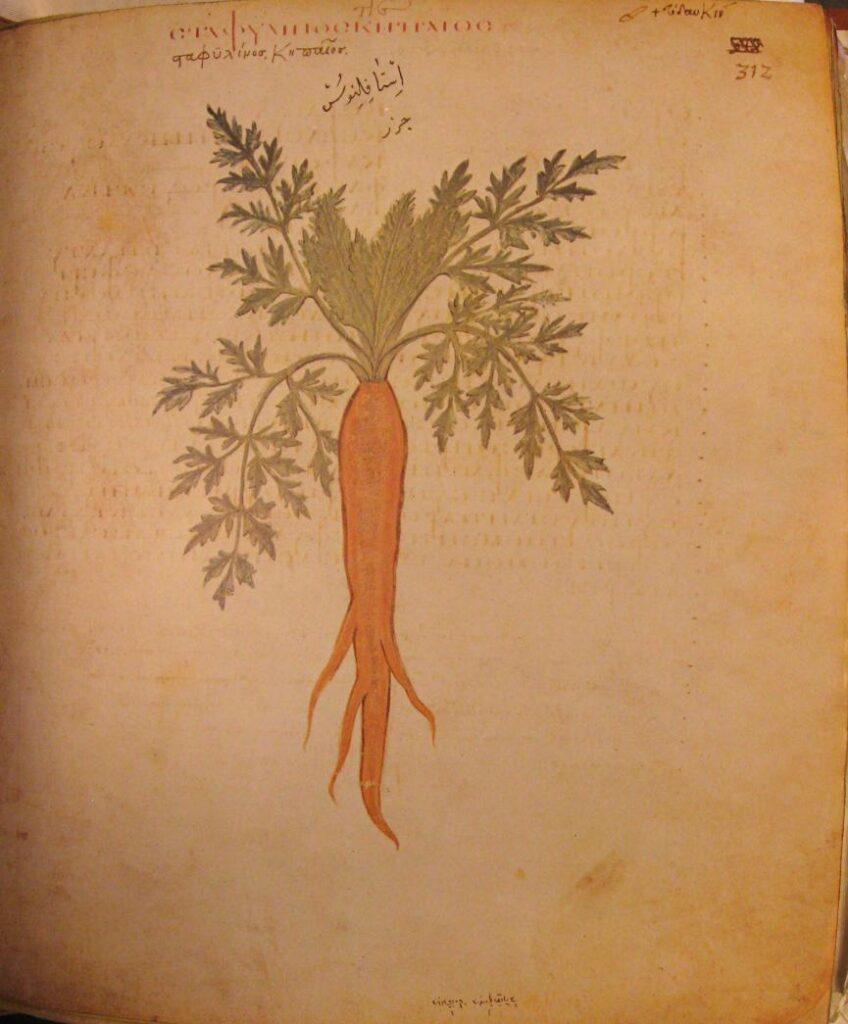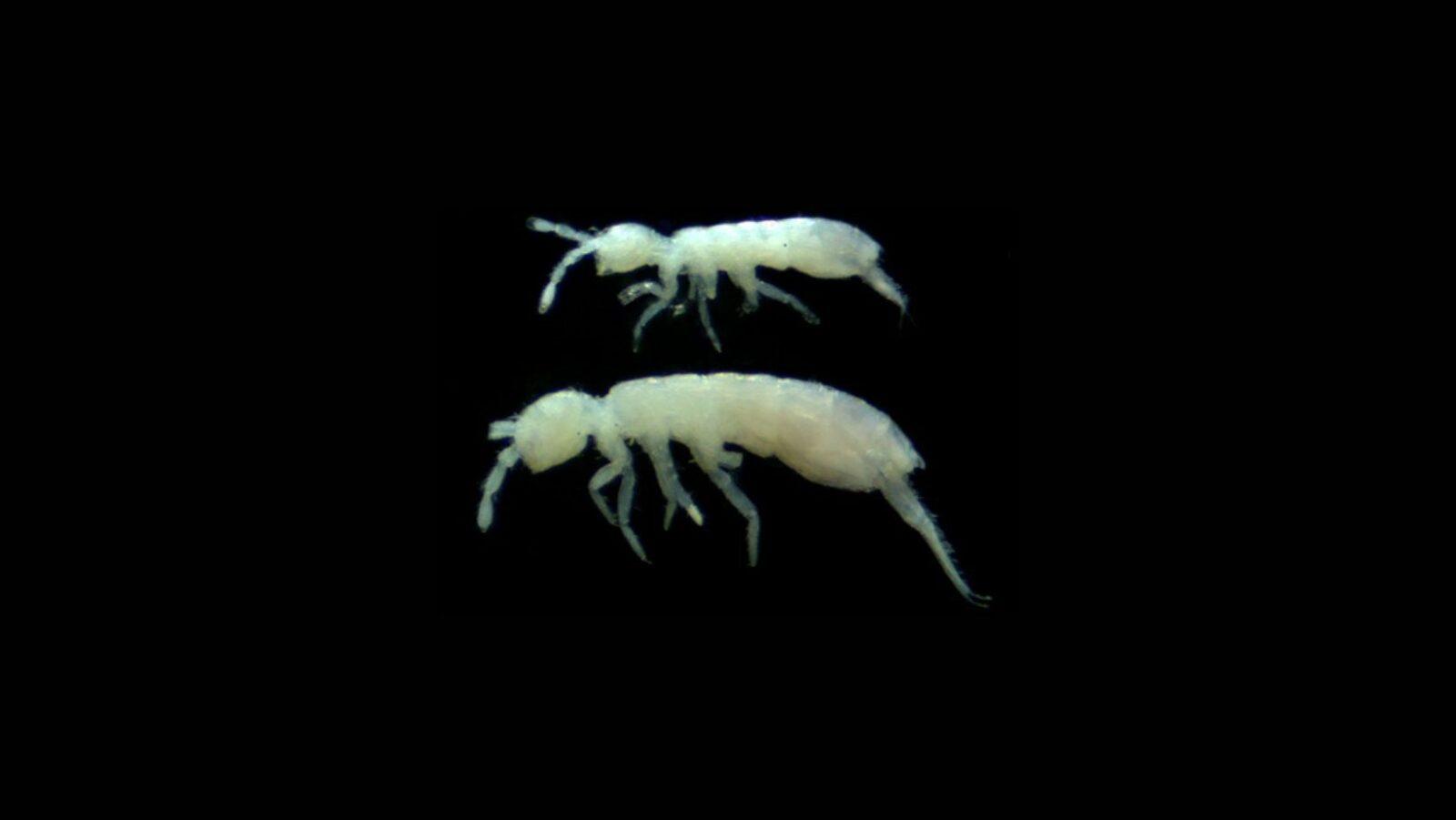
These days, when we think of carrots, orange is the first color that comes to mind. Interestingly enough, this wasn’t always the case.
Based on historical records, the first carrots domesticated for consumption in Asia and Europe were purple and yellow; this was from around the 10th century. Farmers started consistently growing the now-popular orange variant near the end of the 16th century.
According to the World Carrot Museum, the first reference to orange carrots is from the Juliana Anicia Codex, a Byzantine-illuminated manuscript of the work of Greek physician Pedanius Dioscorides (40–90 C.E.):
The early Middle Ages is a murky period in history for the study of vegetables, but a copy of the Codex of Dioskorides dating from 500 to 511 A.D. is illuminated with pictures of plants. The drawings are fairly accurate and convey the important physical characteristics of the vegetables and herbs shown. Thus it is possible to determine that a carrot shown in folio 312 resembles pretty accurately modern day carrot, and more importantly is the earliest depiction of an orange root! The Codex is medical in nature, dealing with the health and dietary aspects of the plants discussed.

Experimentation by European growers led to the emergence of the genetically enhanced orange cultivar (a specific type of plant brought about by selective breeding). This has since become the most common carrot variety.
Orange carrots have higher amounts of beta carotene, a type of antioxidant pigment (carotenoid) that our bodies convert into vitamin A. Purple carrots, on the other hand, derive their color from anthocyanin, another antioxidant pigment. Anthocyanin can reportedly reduce the risk of certain diseases and prevent cell damage.
Still remember your 5th-grade science classes? Test your knowledge and see if you still remember these facts and fundamental concepts in human anatomy, biology, botany, and other branches of science. Click here to try the “Are You Smarter Than A Pinoy Fifth-Grader” Challenge.
Follow the hashtag #FlipFacts on Facebook and Instagram to get your regular dose of science trivia!
References
- http://www.carrotmuseum.co.uk/history.html
Author: Mikael Angelo Francisco
Bitten by the science writing bug, Mikael has years of writing and editorial experience under his belt. As the editor-in-chief of FlipScience, Mikael has sworn to help make science more fun and interesting for geeky readers and casual audiences alike.









